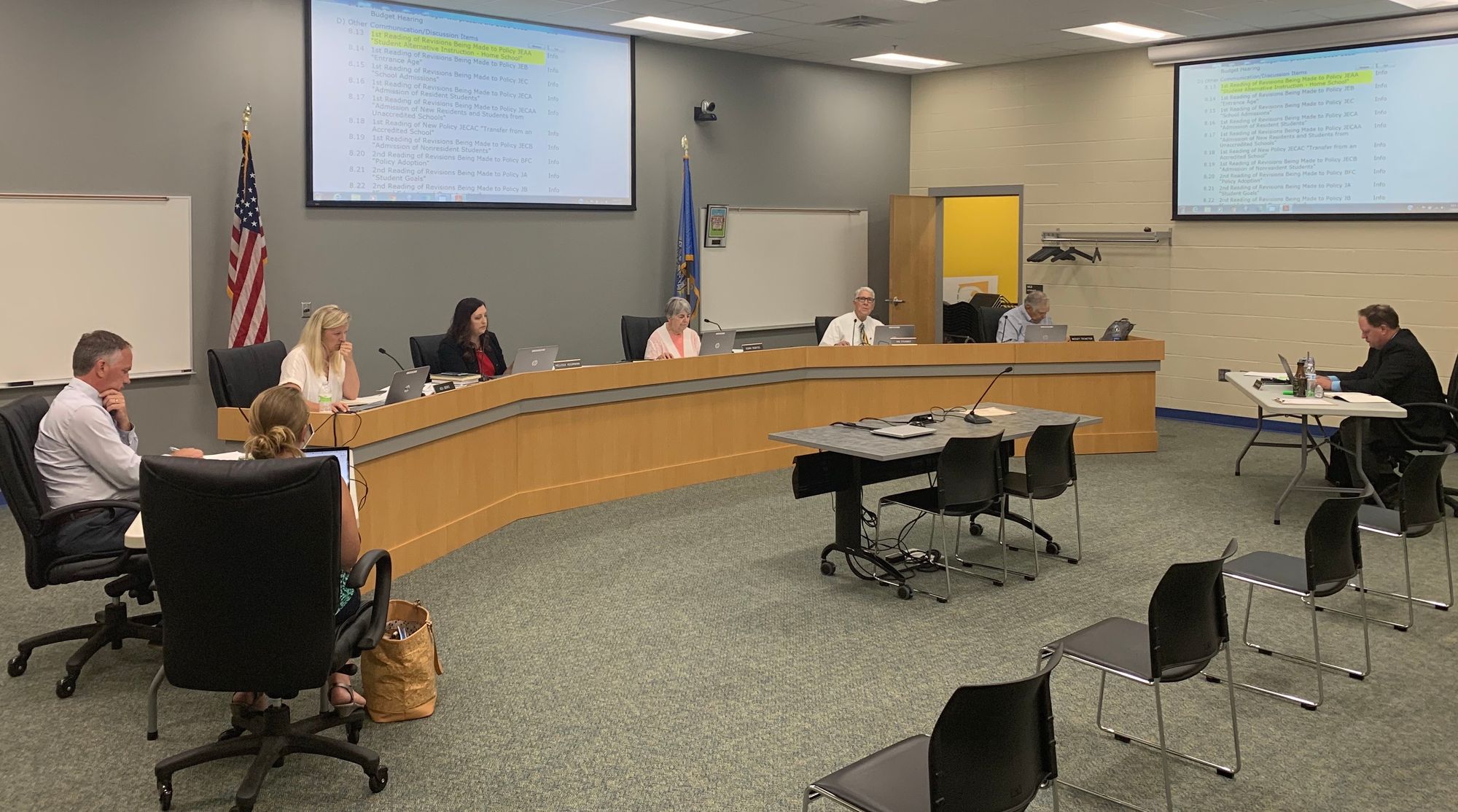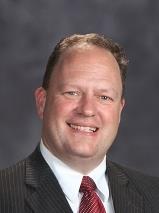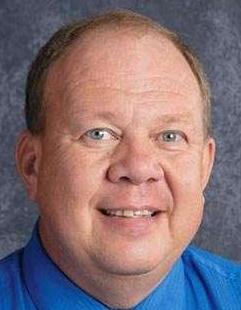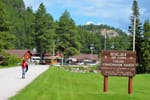Back-to-school plans for this fall are taking shape in South Dakota and — so far, at least — it looks like most teaching will take place in person and masks and COVID-19 vaccinations will be optional for students, teachers and staff.
But safety protocols could change quickly as public school officials keep a close eye on whether the highly contagious COVID-19 delta variant takes hold in South Dakota, a state with low vaccination rates among children and young adults.
In schools across the state, COVID-19 safety measures will be similar to the 2020-21 school year in that social distancing will be implemented when possible, health monitoring will be enhanced, and cleaning and sanitizing of buildings and buses will be more frequent than normal.
As of mid-July, Sioux Falls district leaders were still considering plans for returning to school, but officials in Rapid City and several other districts contacted by News Watch have approved in-person learning and guidelines that recommend but do not require masks or vaccinations.
“We will be recommending but not requiring masks for staff and students; visitors will be required to mask,” Katy Urban, spokeswoman for Rapid City schools, said in an email to News Watch. “We will not be requiring proof of vaccination. The Governor’s Office signed an executive order prohibiting schools or any state government entity from asking for proof of the COVID-19 vaccination.”
Recent messaging from health groups at the national level has been uneven regarding use of masks in schools this fall, and the discussion has taken on greater urgency as the COVID-19 delta variant has spread quickly across the country and caused some vaccinated people to test positive for the illness.
The most recent statement by the federal Centers for Disease Control and Prevention said that fully vaccinated people can generally go without masks in indoor settings. But the CDC is also pushing more people to get vaccinated, noting that more than 97% of recent hospitalizations due to COVID-19 were among the unvaccinated. Vaccines are not available to those under 12, and vaccine hesitancy has been highest among children and young adults, according to federal data.

On July 19, the American Academy for Pediatrics announced its position that mask usage should be mandatory for everyone in public schools across the country this fall.
“AAP recommends universal masking because a significant portion of the student population is not yet eligible for vaccines, and masking is proven to reduce transmission of the virus and to protect those who are not vaccinated,” the organization said in a statement, which also supported a return to in-person teaching. “Many schools will not have a system to monitor vaccine status of students, teachers and staff, and some communities overall have low vaccination uptake where the virus may be circulating more prominently.”
As of July 1 in South Dakota, about 14% of children ages 12-17 were vaccinated against COVID-19 and about 32% of adults ages 18-24 were vaccinated, according to the health department. Overall, about 51% of state residents eligible for the vaccines were at least partially vaccinated and 46% were fully vaccinated. The vaccination rate in South Dakota rose quickly when vaccines were made available, especially among older and more vulnerable adults, but the rate has virtually stagnated in recent months.
Before starting school at any age in South Dakota, all K-12 students must present proof of being vaccinated or in the process of being vaccinated against polio, diphtheria, pertussis, measles, rubella, mumps, tetanus, meningitis and chickenpox, according to state law. Religious exemptions can be considered by school districts.
The COVID-19 vaccines for schoolchildren 12 and older are on a list of recommended vaccines on the state Department of Health website. But in keeping with the broader approach to COVID-19 vaccines by state government, the health department will not mandate that students be vaccinated for COVID-19 before attending school, said department spokesman Daniel Bucheli.
“There will be no COVID-19 vaccination mandates in South Dakota—this is no different for schools,” Bucheli wrote in an email to News Watch. “As we have since the beginning of the pandemic, DOH will continue to provide parents and families updated COVID-19 information as it becomes available, permitting them to make the best health decisions for themselves and their children.”
Bucheli did not respond to a follow-up question on why COVID-19 vaccines would not be required at a time when the state requires students to be vaccinated for several other harmful viruses.
According to the state, about 15,800 COVID-19 cases were reported among students and staff in public K-12 schools from August 2020 through May 2021, with 15,755 of those patients considered recovered. Roughly 11,860 students contracted the virus and 3,935 teachers or staff were positive for COVID-19 during the past school year, the state said. In all, about 20,200 people age 19 and under in South Dakota have been diagnosed with COVID-19 so far; none of those cases led to deaths, but 133 people in the 19-and-under age group were hospitalized, the state said.
Research remains limited on how COVID-19 affects children, though hospitalizations and deaths remain extremely rare. About 4 million American children had been diagnosed with COVID-19 as of July 2021, though infection rates have risen sharply in recent months. As of July 15, South Dakota had the sixth-highest child COVID-19 infection rate in the country (North Dakota had the second-highest rate), according to the pediatric association.
"AAP recommends universal masking because a significant portion of the student population is not yet eligible for vaccines, and masking is proven to reduce transmission of the virus and to protect those who are not vaccinated." -- American Academy for Pediatrics, July 19, 2021
Serious symptoms have been most common in children with underlying immune deficiencies or other pre-existing illnesses. But researchers are concerned that COVID-19 exposure has been tied to multi-system inflammatory syndrome in children, a condition in which different body parts can become inflamed, including the heart, lungs, kidneys, brain, skin, eyes or gastrointestinal organs. Infected children can also spread COVID-19 and its variants to other children and adults, which is one concern for school districts heading into the fall and beyond.
The South Dakota Department of Education released its “Strong Schools 2021-22” back-to-school guidelines for public schools in mid-July, and recommendations include primarily in-person learning with options for virtual teaching where needed, continuous monitoring of local COVID-19 conditions and adapting as needed, and keeping the public well informed of any changes or new protocols.
A significant focus of the 2021-22 guidelines is to assess and overcome the high levels of learning loss that occurred for some students during the pandemic, in which normal teaching methods were disrupted, some children and staff missed school due to COVID-19, and virtual learning posed a challenge for many students.
In the Rapid City schools, for example, students lost about 70,000 days of learning, and teachers and staff lost about 10,000 working days due to COVID-19 illness or quarantining.
“We expect schools will continue to provide primarily in-person instruction and efforts begun in 2020-21 to assess and address learning loss and to re-engage students who may have disconnected from their learning during the pandemic,” department spokeswoman Ruth Raveling wrote to News Watch in an email. “While some COVID-19 mitigation efforts will continue, our focus is shifting largely to emerging from the impacts of the COVID year as a stronger education system.”
In Beresford, south of Sioux Falls, district officials are planning for “normal learning” in the fall, according to Superintendent Dustin Degen.
According to its tentative plan, learning will be in-person and masks will be optional for all, Degen said. Encouraged practices will include close monitoring of COVID-19 symptoms, regular hand washing for elementary students, and limited sharing of educational materials.
The Brookings School Board heard the first draft of its plan for the 2021-22 school year during a July 19 school board meeting. Face-to-face learning will be the primary delivery mode for instruction at the beginning of the school year, with the potential for hybrid or virtual learning if circumstances related to the pandemic change.
“Those would have to be pretty severe circumstances in which we would find ourselves implementing either a hybrid or remote learning model; however, I want to be very clear we have not taken any of those options off the table,” Superintendent Klint Willert said. “We don’t know what we don’t know.”

The plan leaves room for changes in the district’s response depending on potential variants, including the reimplementation of a mask mandate.
“They [masks] are optional, recognizing that some individuals may not be vaccinated, understanding we have some individuals that will choose to wear a mask,” Willert said.
Individual requests for virtual learning options will be handled on a case-by-case basis.
During the meeting, the board heard from one member of the public who expressed concerns about the proposed mask rules.
“Making it optional I can understand for those students who’ve had the opportunity to get vaccinated,” said Tony Lanning, a Title 1 teacher.
Lanning said it is important to note that teachers and staff will be working alongside many students who are unlikely to be vaccinated against COVID-19.
“Maybe we need to consider the masks for those lower levels, K-5, until the vaccine is available,” Lanning said.
In the Belle Fourche School District in Butte County, the typical school day in fall 2021 will look very similar to how schools operated in 2020, Superintendent Steven Willard said.
According to a back-to-school plan approved by the school board in July, the district will operate under a three-tier COVID-19 plan that starts with entirely in-person teaching and moves more classes and activities virtual if COVID-19 cases increase.
To start the year, teaching will be done face-to-face, masks will be “strongly encouraged” but not required, and vaccination is “recommended” but not required for students, faculty or staff. Willard said the district is not planning any targeted efforts to encourage greater vaccination among students, faculty and staff.

“It’s a personal choice issue; at this point, it’s not a mandate of our legislature,” Willard said. “We got through last year without anybody vaccinated, so I think we’ll get through this year in pretty good shape if we have any kind of vaccination in the district.”
The district, with about 200 teachers and staff that serves roughly 1,400 students, did not suffer any major outbreaks of COVID-19 in the last school year and is hopeful that track record can be repeated, Willard said.
District officials, he said, will keep an eye on recommendations from the federal Centers for Disease Control and Prevention to guide any protocol changes as the school year progresses. They will also be watching to see if the COVID-19 delta variant begins to spread widely in their region or schools, and will keep an eye on any potential coronavirus outbreaks resulting from the nearby Sturgis motorcycle rally in August, Willard said.
Social distancing will be implemented when possible; buses will be sanitized daily, and hand sanitizer will be placed at each entrance and in every classroom; group activities will be virtual when possible; and water fountains will be used only to fill bottles. The Belle Fourche district also installed new air-purification systems in two schools that recently had air-conditioning upgrades, Willard said.
“Nothing is perfect but I think we’re prepared for anything that comes our way,” he said. “It’s fluid. If you get a big increase of cases, we’ll have to revisit things, but we’re hoping we’ll be as close to normal as we can.”
— South Dakota News Watch reporter Andrew Rasmussen contributed to this report.




